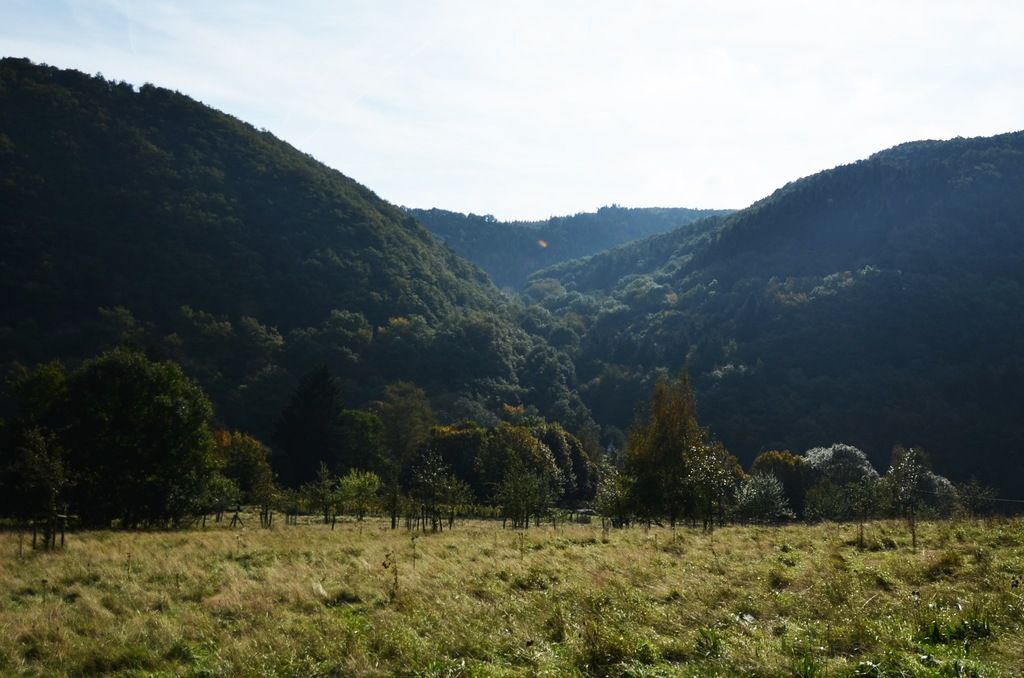Neanderthals Suffered a Significant Event Around 110,000 Years Ago, Possibly Leading to Their Extinction
The Great Neanderthal Earwash: Unveiling an Ancient Catastrophe
Cryptic secrets from the past are coming to light as scientists examine the inner ear canals of our closest extinct relatives – the Neanderthals. A shocking discovery: around 110,000 years ago, these ancient humans experienced a drastic genetic slump that put them on a path toward extinction.
The clue to solving this ancient population conundrum? Our ears!
An international research crew discovered that the mysterious construction of Neanderthal ear canals provides vital clues about the species' demographic history. By scrutinizing these minuscule bodily features across different timeframes, scientists corroborated a devastating "bottleneck" event that throttled Neanderthal genetic diversity long before they faded from our world.
"Ear canals - the control tower of balance. Their formation is under strong genetic control, making them a fantastic signpost for evolutionary relationships," explained Rolf Quam, a Binghamton University anthropologist involved in the research.
This imaginative approach grants us a peek into the demographic struggles of our most distant vanished kin, providing insights into their frailty that echo even in our contemporary lives.
The Ear's Revealing Truths
The scientists, spearheaded by Alessandro Urciuoli from Universitat Autònoma de Barcelona, zeroed in on a specific analysis of ear canals - the semicircular canals. These three fragile tubes in the inner ear are responsible for maintaining equilibrium.
These delicate structures develop early in life and remain relatively stable thereafter. What's more crucial, their formation is largely influenced by genes, making them exceptional indicators of genetic connections and population diversity.
By examining specimens from various Neanderthal epochs, analysts revealed a chilling pattern. Classic Neanderthals displayed significantly less morphological diversity in their ear canals than their predecessors – a physical representation of genetic deprivation that aligns perfectly with previous DNA studies.
"By incorporating fossils from multiple geographical locations and time periods, we've constructed a comprehensive take on Neanderthal evolution," explains Mercedes Conde-Valverde, a paleontologist from Universidad de Alcalá and study co-author.
The findings, published in Nature Communications on February 20th, 2025, prove that something catastrophic struck Neanderthal populations around 110,000 years ago - though the exact culprit remains a mystery.
More Than Just a Bygone Species
The importance of this research transcends mere paleontological fascination.
Neanderthals were far more than just another extinct species; they play a pivotal role in our own human narrative. Modern humans of European and Asian descent carry roughly 2% Neanderthal DNA in their genome, the result of interbreeding events that took place after we left mother Africa.
These genetic legacies influence traits varying from skin pigmentation to immune function in modern populations.
Understanding the demographic obstacles faced by Neanderthals provides crucial context for interpreting our own evolutionary history and the genetic legacy they left behind.
The Twist That Stumped the Experts
While this research upholds the long-suspected population bottleneck around 110,000 years ago, the team stumbled upon an unexpected revelation that defies conventional wisdom about Neanderthal origins.
Researchers have long assumed that Neanderthals experienced another significant loss of diversity at the beginning of their evolution. However, ear canal evidence suggests that the phase of high variation may have occurred later, challenging the notion of an early bottleneck event.
In essence, the earliest Neanderthals may have been far more robust genetically than anticipated – adding new intrigue to the story of the later population collapse.
A Survival Saga Almost Cut Short
The 110,000-year bottleneck is fascinating not only because it initiated Neanderthals' rapid decline but also because it didn't immediately seal their fate. Despite the limited gene pool, they persevered for another 70,000 years before disappearing.
These findings underline the perilous impact of population bottlenecks on species' long-term survival. Although they don't spell immediate extinction, such events can limit adaptations and make organisms exceptionally vulnerable to environmental upsets, disease outbreaks, or competition from other species.
In the case of Neanderthals, this genetic impoverishment likely made them susceptible to the climatic fluctuations and human encroachment during their final epochs.
The Methodology Breakthrough
This research is more than just a blip in the Neanderthal extinction timeline; it represents a scientific breakthrough in paleoanthropology. Extracting DNA from fossils older than 100,000 years remains immensely difficult - almost impossible for many specimens. By employing anatomical features as genetic proxies, scientists have innovated a methodology that could be relevant for studying other extinct human species where DNA evidence is scarce.
"Our study offers a novel approach to estimating genetic diversity within Neanderthal populations," emphasized Quam.
This technique could prove valuable in exploring demographic patterns in other hominin lineages, potentially revealing whether population bottlenecks were dominant features in human evolution or relatively exclusive to Neanderthals.
The Mystery Remains
While this study confirms the reality of the Neanderthal bottleneck, it doesn't fully illuminate the mystery of their ultimate extinction. Competition with Homo sapiens, climate fluctuations, and genetic absorption are likely among several factors at play.
One tantalizing possibility is that Neanderthals willingly interbred with Homo sapiens in times of stress, diluting their genetic identity. The ear canal evidence adds an interesting dimension to this complex picture by suggesting that the Neanderthals approached the point of no return even before encountering the emergence of Homo sapiens.
The Lessons for Today
Today's endangered species face many of the challenges that Neanderthals faced long ago. In fact, several modern-day populations bear striking resemblance to the genetic situation that Neanderthals faced. By preserving genetic diversity – not just numbers – we can ensure greater resilience in the face of environmental challenges, further studies, and adaptation.
Questions Unanswered
The study offers a comprehensive picture of the Neanderthal genetic bottleneck, but the quest is far from over. What triggered the population collapse around 110,000 years ago, and was it an isolated incident in Neanderthal history? Climate records suggest that this era coincided with cooling trends in Europe, but the precise causes still remain murky. Future studies are planned to further investigate the causes, potential effects, and ongoing implications of Neanderthal demographic bottlenecks.
From these tiny ear canals, Neanderthals speak volumes about their epic journey – a story etched in bones and echoing in our genome. Their survival was anything but a simple tale of replacement; the Neanderthal legacy we carry today reminds us continues to influence our own evolution.
- The study of Neanderthal ear canals within the realm of space-and-astronomy could provide insights into the effects of population bottlenecks on long-term species survival, helping us better understand the potential outcomes for endangered species on Earth today.
- Further research into the causes and implications of the Neanderthal genetic bottleneck, as unveiled through the analysis of ear canals, falls under the category of education-and-self-development as it deepens our understanding of human evolution and genetics, shedding light on the complex interplay between genetic diversity, adaptation, and extinction.








